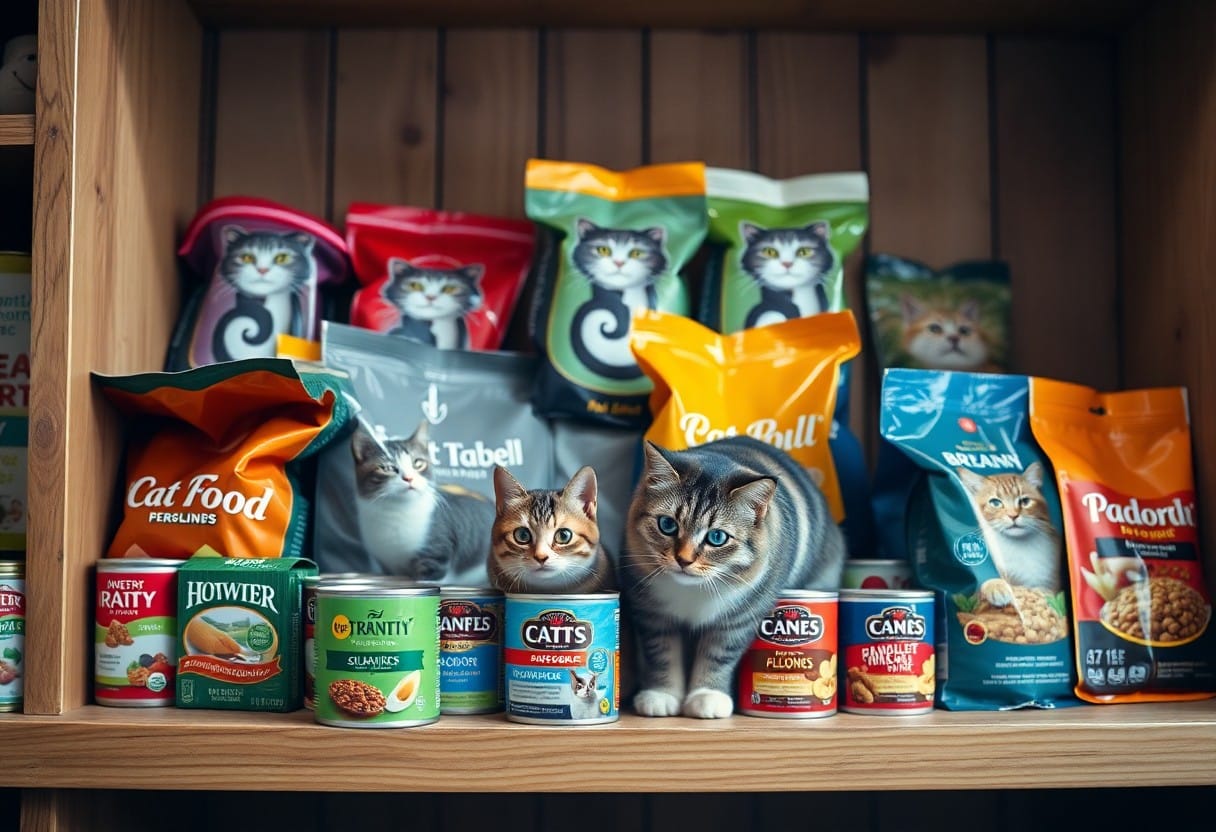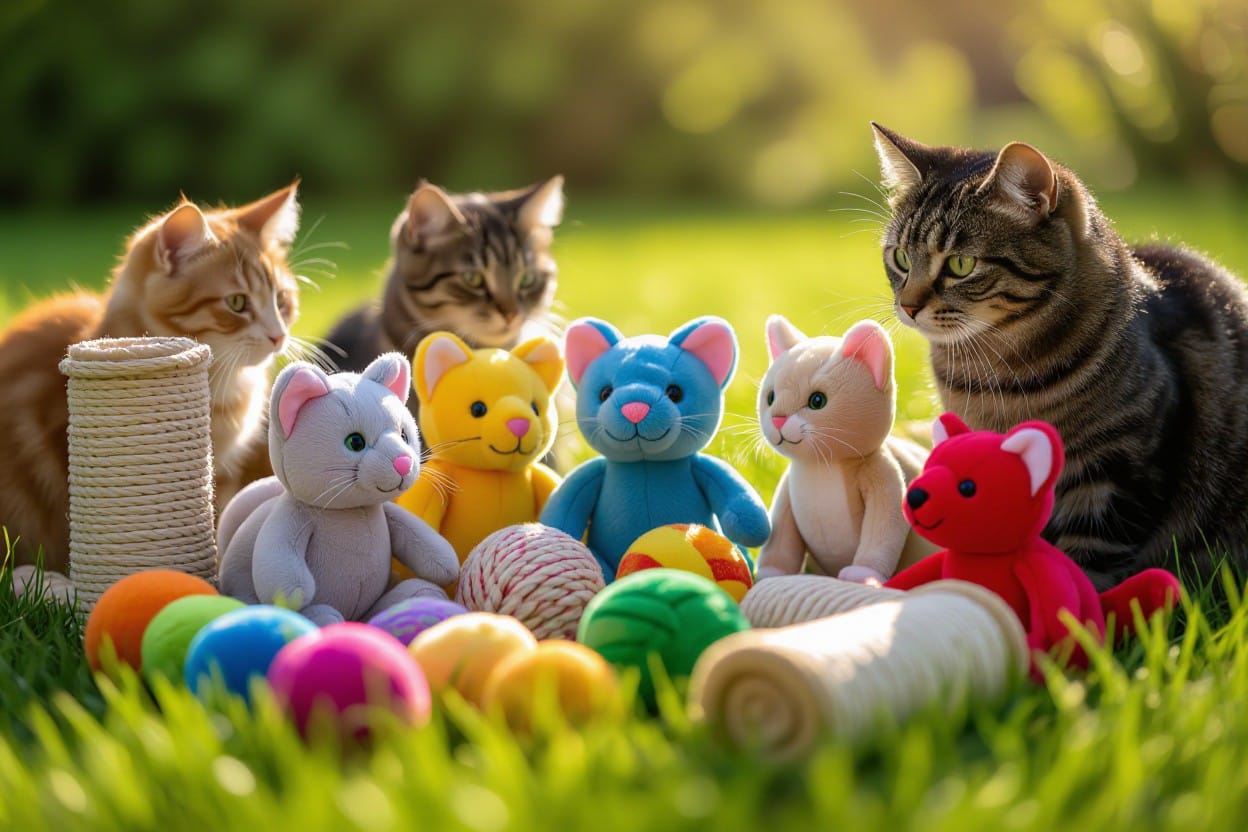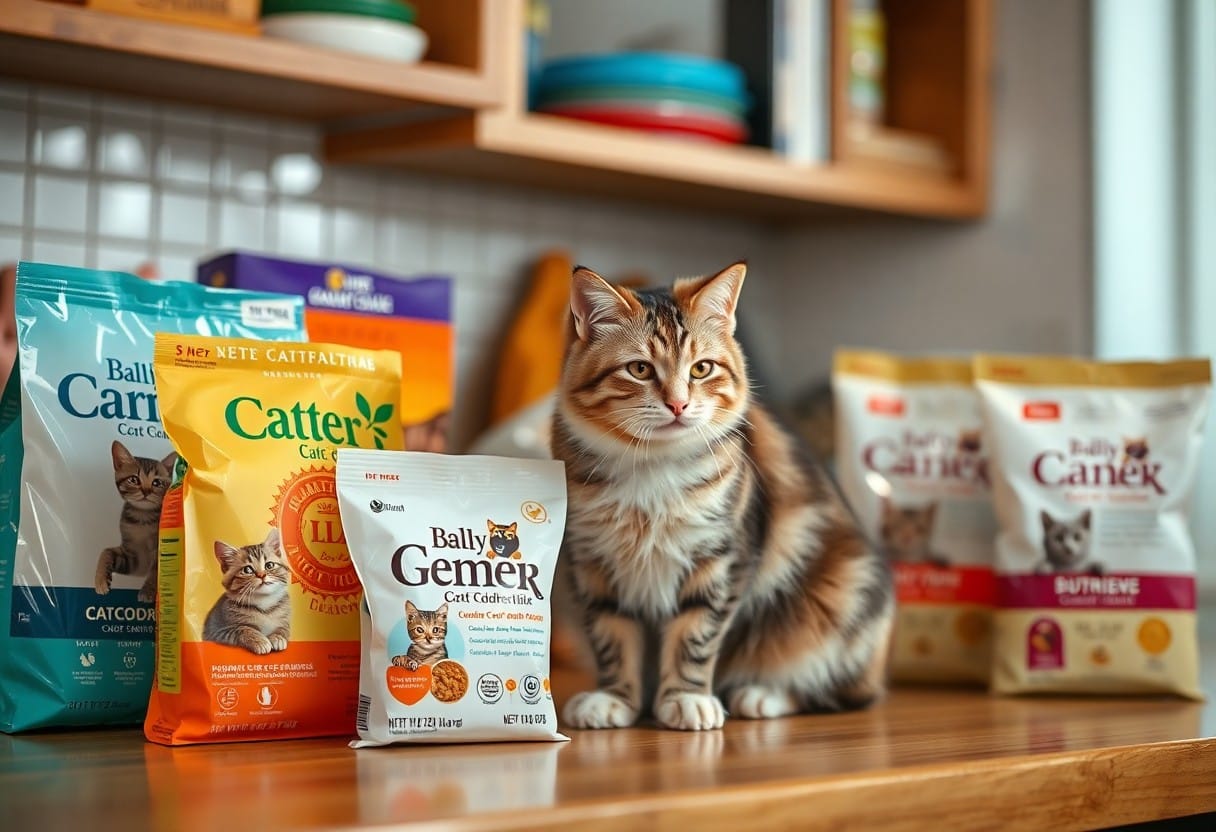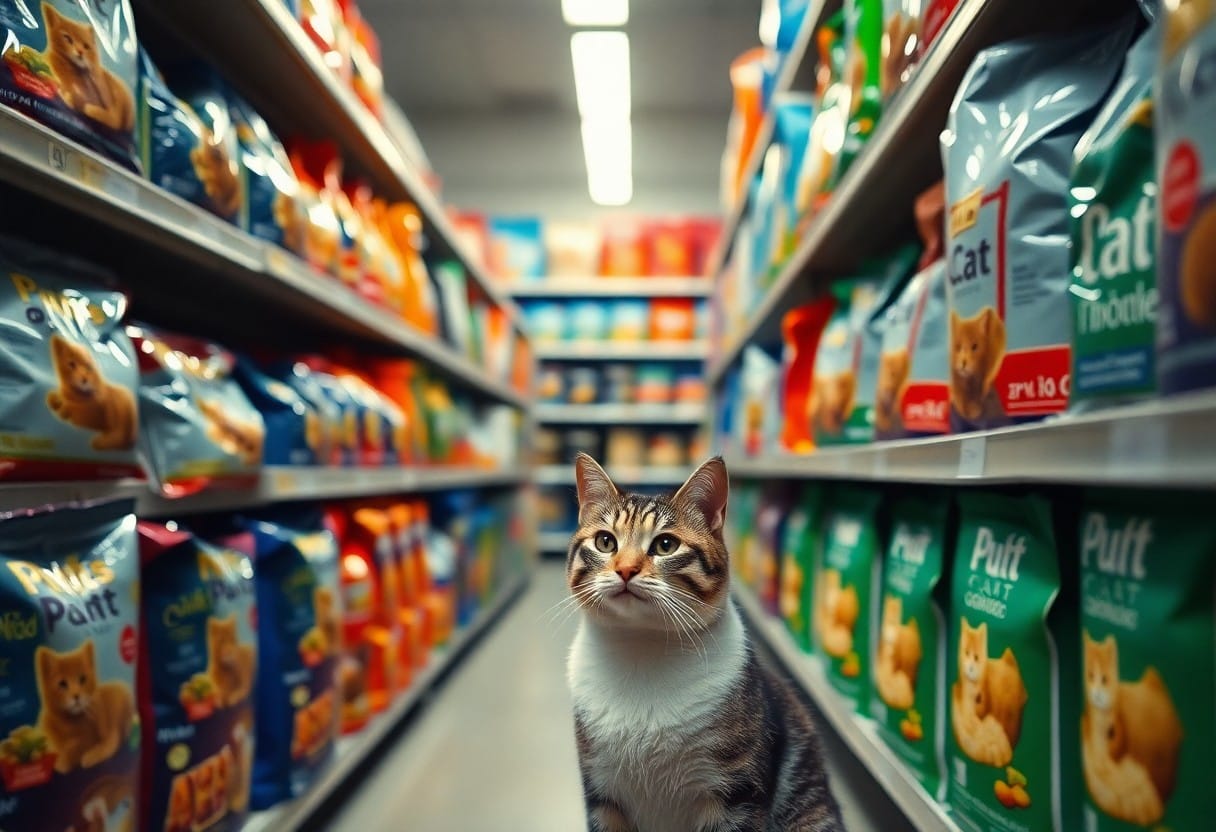There’s a lot to consider when selecting the perfect food for your feline friend. With so many options available, you need to ensure that you’re making the right choice for their health and happiness. This guide provides you with seven crucial steps to navigate the overwhelming world of cat food brands. You’ll discover how to identify quality ingredients, understand your cat’s dietary needs, and avoid potential hazards in pet food. Empower yourself with the knowledge to choose wisely and give your cat the nourishment they deserve.
Key Takeaways:
- Understand the importance of selecting high-quality ingredients by reviewing the label to ensure your cat is getting a balanced diet.
- Consider your cat’s specific dietary needs based on their age, health status, and lifestyle to choose the most suitable food brand.
- Research and compare different cat food brands, taking note of customer reviews and expert recommendations to make an informed decision.
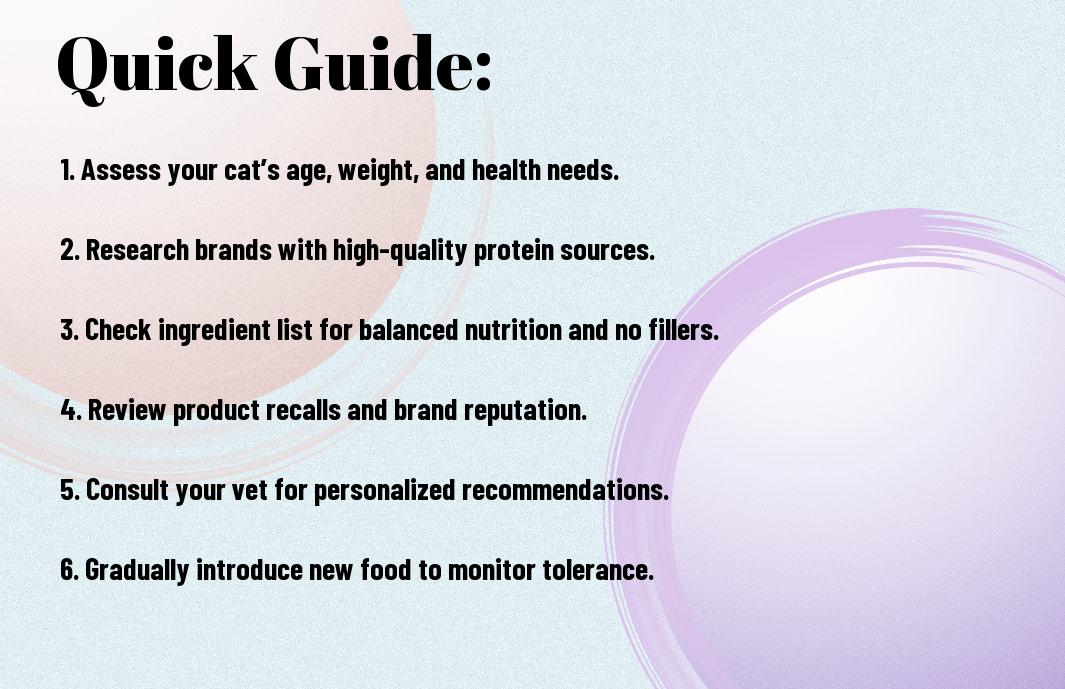
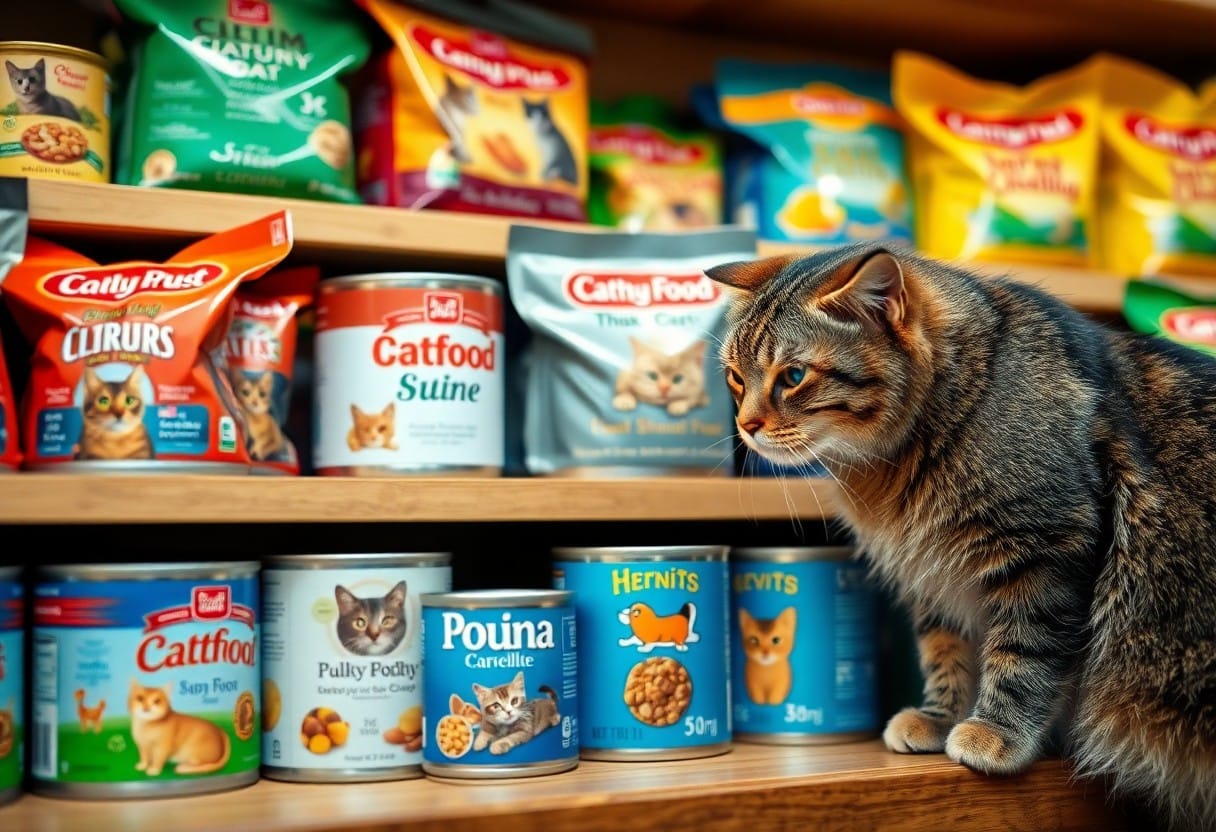
Understanding Cat Food Types
Before choosing a cat food brand, it’s vital to understand the various cat food types available. Each type serves different nutritional needs and preferences. Here’s a quick overview:
| Dry Cat Food | Convenient, long shelf life, dental benefits |
| Wet Cat Food | Higher moisture content, palatable, often protein-rich |
| Raw Options | Natural diet, higher digestibility, and nutrient preservation |
| Freeze-Dried | Convenient handling, nutrient retention, easy to store |
| Commercial vs. Homemade | Balanced nutrition versus custom recipes |
The right type will depend on your cat’s unique preferences and dietary needs.
Dry Cat Food
Types of dry cat food are popular for their convenience and long shelf life. They are also beneficial for dental health as the crunch can help reduce plaque buildup. However, you should ensure that the brand you choose provides a balanced formula with appropriate nutrients for your cat.
Wet Cat Food
With wet cat food, you provide your feline friend with a hydrating meal that is often more appealing due to its aroma and texture. It generally contains higher protein levels, making it an excellent choice for cats needing added moisture in their diet.
Food choices like these can also assist with hydration, especially if your cat doesn’t drink enough water. However, they might be more expensive and have a shorter shelf life once opened, so plan accordingly.
Raw and Freeze-Dried Options
Food enthusiasts may consider raw and freeze-dried options as an alternative to traditional diets. Raw food mimics a cat’s natural eating habits, typically containing less processed ingredients and no preservatives.
Another option is freeze-dried food, which retains nutrients while providing a long shelf life. It offers convenience, and some believe it can lead to better health outcomes for cats. However, handling raw pet food requires care to maintain health and sanitation standards.
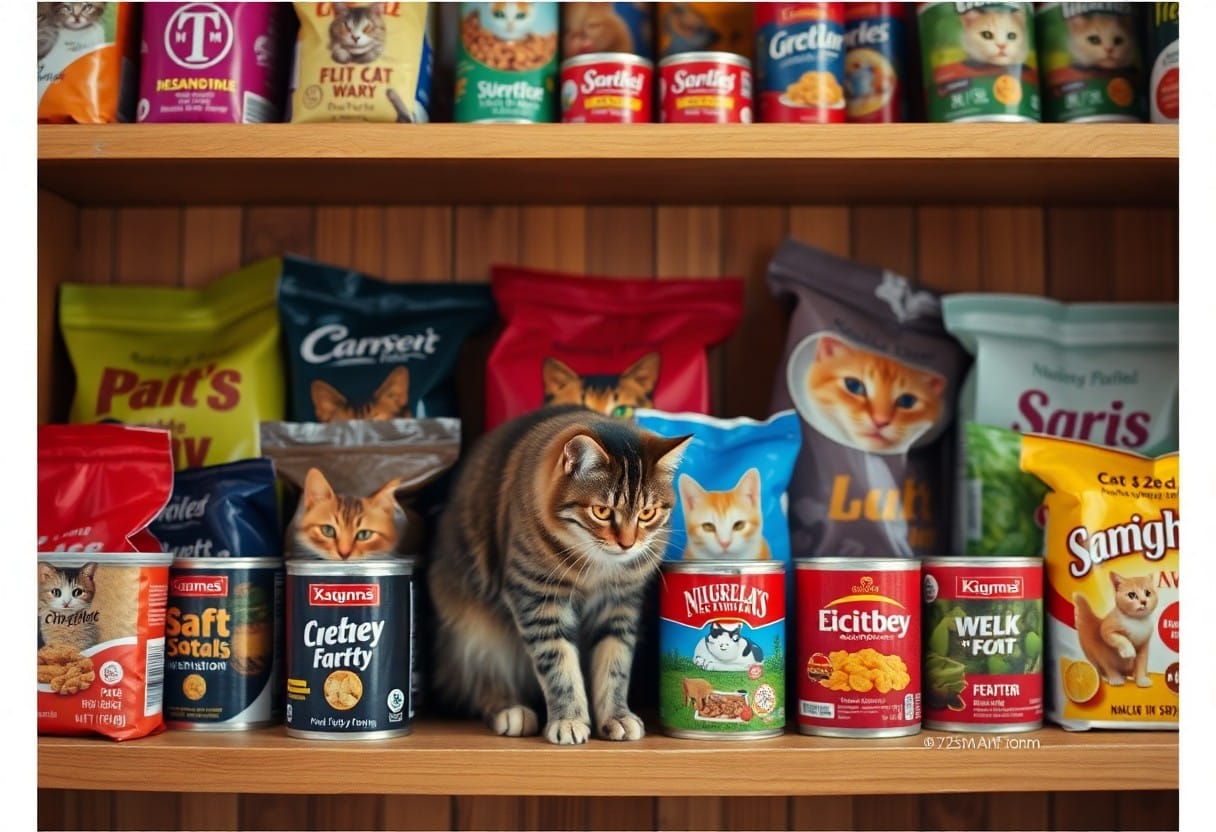
Important Factors to Consider
Some key factors can significantly impact your decision when selecting a cat food brand. Consider nutritional content, ingredients quality, brand reputation, and specific dietary needs of your cat. Additionally, think about price, availability, and any special formulas that may be recommended by your veterinarian. Assure that you are making an informed choice by researching reliable options.
Nutritional Needs
There’s no one-size-fits-all when it comes to your cat’s diet—different breeds and life stages have varying nutritional needs. Consider factors like age, activity level, and any specific health concerns when selecting a food that provides the right balance of proteins, fats, and carbohydrates necessary for your feline.
Ingredients Quality
Quality in cat food ingredients is paramount. You want to avoid fillers and artificial additives that can harm your cat’s health.
A well-balanced cat food should primarily feature high-quality, animal-based proteins as the first ingredient. Look out for whole meats or meat meals, while staying cautious of by-products or grain fillers such as corn or soy that lack nutritional value. The presence of fruits, vegetables, and necessary fatty acids can indicate a positive balance of micronutrients. Always scrutinize the ingredient list to ensure your cat is receiving the proper nourishment without harmful substances.
Step-by-Step Guide to Choosing a Brand
All cat owners must navigate the complex world of pet food to find the right brand that caters to their feline’s needs. The following steps will help you systematically choose a suitable cat food brand that aligns with your cat’s health and your values.
| Steps | Actions |
|---|---|
| Identify your cat’s needs | Consider age, health, and dietary restrictions |
| Research brands | Look for reputable manufacturers |
| Compare ingredients | Analyze nutritional content and sources |
| Read reviews | Consult other cat owners and experts |
| Check recall history | Ensure the brand has a good safety record |
| Evaluate price | Determine if the cost aligns with your budget |
| Make your selection | Choose the brand that best meets your criteria |
Research and Comparison
With the plethora of options available, you will need to conduct extensive research and compare different cat food brands. Look for details like ingredient quality, nutritional analysis, and customer testimonials. Utilize online resources, forums, and vet reviews to gather a comprehensive understanding, allowing you to make an informed decision.
| Research Actions | Tools |
|---|---|
| Explore brand websites | Official sources and product pages |
| Join online forums | Community insights and experiences |
| Consult veterinary advice | Expert recommendations |
Evaluating Brand Reputation
Assuming you have gathered sufficient information about various cat food brands, evaluating their reputation is the next step. This involves examining brand history, industry awards, and customer feedback, which will help you identify manufacturers known for quality and transparency.
Choosing a reputable brand can significantly impact your cat’s well-being and longevity. Look for brands that have a strong commitment to quality ingredients and transparent manufacturing processes. Investigate brands that have received industry certifications and positive customer feedback. Be wary of brands with a poor track record or frequent recall incidents, as these can pose health risks to your feline companion. Prioritize brands that demonstrate a genuine concern for your cat’s nutrition and health.
Tips for Making the Right Choice
Not all cat food brands are created equal, and making the right choice can be overwhelming. To simplify your decision-making process, consider the following tips:
- Evaluate the ingredients list for quality and nutritional value.
- Choose a brand that meets AAFCO standards.
- Look for age-appropriate formulas for your cat.
- Consider your cat’s health conditions and dietary restrictions.
- Take your cat’s preferences into account, as taste matters.
Knowing your options and their implications can greatly improve your cat’s nutrition and overall well-being.
Consultation with Veterinarians
With the vast array of cat food available, consulting with veterinarians can provide tailored advice for your cat’s dietary needs. A vet can help you identify specific health issues or nutritional needs associated with your cat’s age, breed, or health condition, guiding you toward the most suitable options for your furry friend.
Reading Reviews and Recommendations
Choice matters when deciding on a cat food brand, and reading reviews and recommendations can be a valuable tool in your selection process.
Right reviews will offer insight from other pet owners about the quality and effectiveness of different cat food brands. Look for comments that highlight both positive experiences—like improved health or palatability—and concerns regarding allergies or insufficient nutrition. Seeking out verified reviews can protect your cat from potential harm and ensure that you make an informed choice that leads to a happy and healthy feline companion.
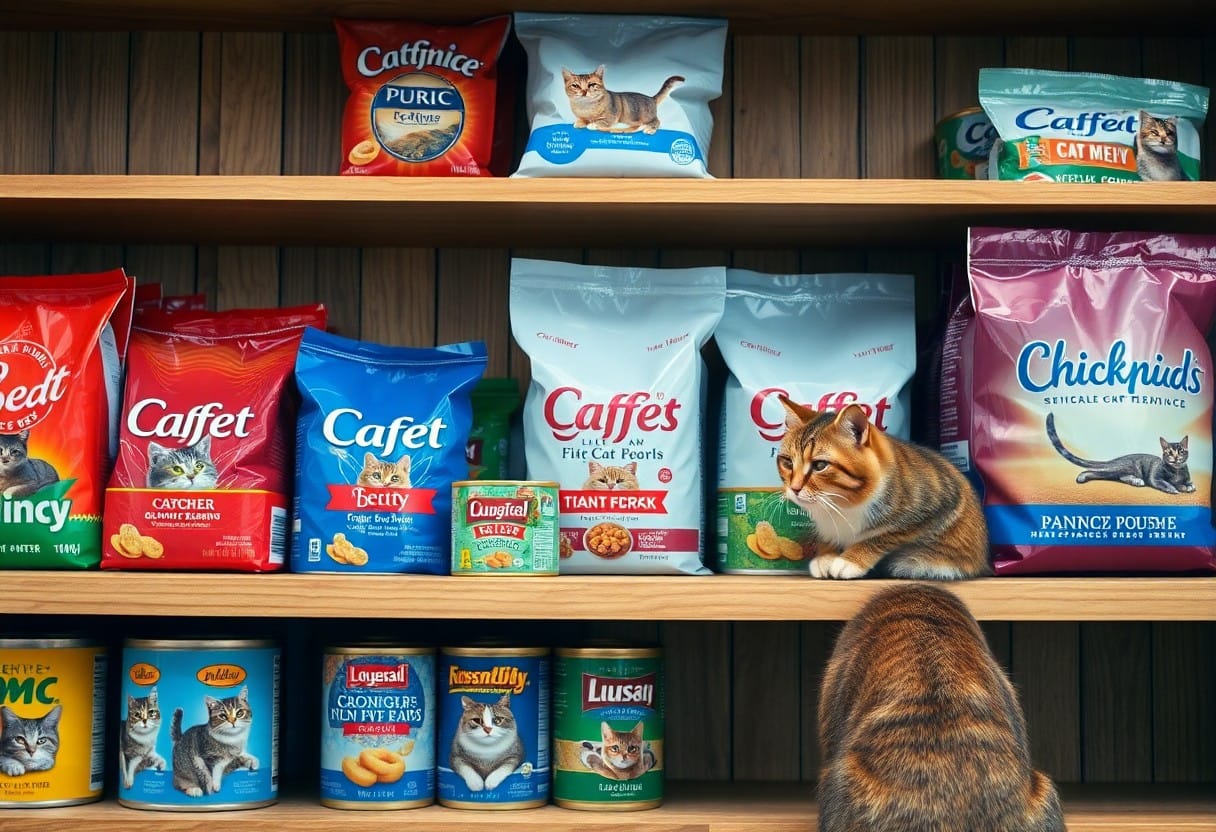
Pros and Cons of Popular Brands
After evaluating various cat food brands, it’s vital to weigh the pros and cons of those that are most popular among pet owners. Below is a comprehensive overview highlighting key features to consider when making your decision.
| Brand | Pros and Cons |
|---|---|
| Brand A | High-quality ingredients; Affordable price; Some flavors may not appeal. |
| Brand B | Wide variety of recipes; Known for sustainability; More expensive. |
| Brand C | Highly rated by veterinarians; Rich in protein; Limited availability. |
| Brand D | Veteran-owned; Focus on holistic ingredients; Some recipes have fillers. |
| Brand E | Grain-free options; Strong customer loyalty; Can be hard to digest. |
Brand A: Benefits and Drawbacks
Even though Brand A is praised for its high-quality ingredients and affordability, some flavors may not appeal to all cats. It’s important to try a variety of flavors to identify what your cat enjoys most, ensuring they receive the nutrition they need without compromising on taste.
Brand B: Benefits and Drawbacks
Brands like Brand B offer a wide variety of recipes and are known for their commitment to sustainability, though they tend to be more expensive. Your cat may appreciate the diverse options, but your budget may feel the pinch.
Brand B focuses on providing your cat with nutritional balance and eco-friendly sourcing. However, this can come at a higher price point. Their extensive line includes options for various dietary needs, making it easier for you to find something that suits your pet. It’s important to note that while their products are often well-received, some cats may find the texture or flavor unappealing.
Budgeting for Cat Food
Keep in mind that budgeting for cat food is necessary to ensure your feline friend gets the nutrition they need without breaking the bank. Consider how much you can comfortably allocate to your cat’s food each month, factoring in both your cat’s size and dietary needs. This approach will help you navigate the wide variety of options available while sticking to your financial plan.
Cost Considerations
Even though premium cat food can be more expensive, it often provides better nutrition and can lead to healthier long-term outcomes, potentially saving you money on vet bills. Take into account both the price per bag and the serving size to determine the cost-effectiveness of a brand. Balancing your budget with quality is key to finding the right fit for you and your cat.
Value for Money
An important factor to keep in mind is how the cat food you choose provides value for your investment. Evaluate whether the food contains high-quality ingredients, proper nutrient levels, and any additional benefits that could enhance your cat’s health.
This means assessing the ingredients, guaranteed nutritional analysis, and brand reputation. Focus on products that list real meat as the first ingredient and avoid fillers like corn or soy, which can dilute your cat’s diet. Ultimately, making informed choices ensures that you receive quality food at a reasonable price, supporting your cat’s health while keeping your finances in check.
Summing up
Conclusively, selecting the right cat food brand involves understanding your cat’s specific needs, evaluating the ingredient quality, consulting with your veterinarian, and reviewing nutritional labels. By following these seven steps, you can make informed choices that promote your feline’s health and well-being. Taking the time to research and compare options ensures that you provide the best nutrition for your beloved pet, fostering a happy and healthy life together.
Q: What are the key factors to consider when choosing a cat food brand?
A: When selecting a cat food brand, consider the nutritional value of the food, the quality of ingredients used, the specific dietary needs of your cat, and the reputation of the brand. Look for products that have a high protein content, minimal fillers, and are formulated to meet the specific age, breed, and health requirements of your cat. Additionally, researching brand transparency regarding sourcing and manufacturing processes can help ensure you are choosing a reputable option.
Q: How can I determine if a cat food brand is suitable for my cat’s specific needs?
A: To determine if a cat food brand is suitable for your cat, start by assessing your cat’s age, health status, and any dietary restrictions. Consult with a veterinarian to discuss your cat’s specific nutritional needs and any issues like allergies or sensitivities. Reviewing the guaranteed analysis on the product label, which includes information on protein, fat, fiber, and moisture content, can also guide you in making an informed decision. It’s helpful to look for food formulations that align with your cat’s life stage, whether they are a kitten, adult, or senior.
Q: What are some red flags to watch out for when selecting a cat food brand?
A: Red flags to be cautious of when selecting a cat food brand include vague ingredient lists or terms like “by-products” without clarification, as these can indicate lower quality ingredients. Be wary of brands that make excessive health claims without scientific backing or those that do not provide a nutritional analysis. Additionally, brands that have had product recalls or negative reviews regarding safety and quality should be approached with caution. It’s also wise to avoid foods with artificial additives, preservatives, and colors, which may not provide any nutritional benefit to your cat.
